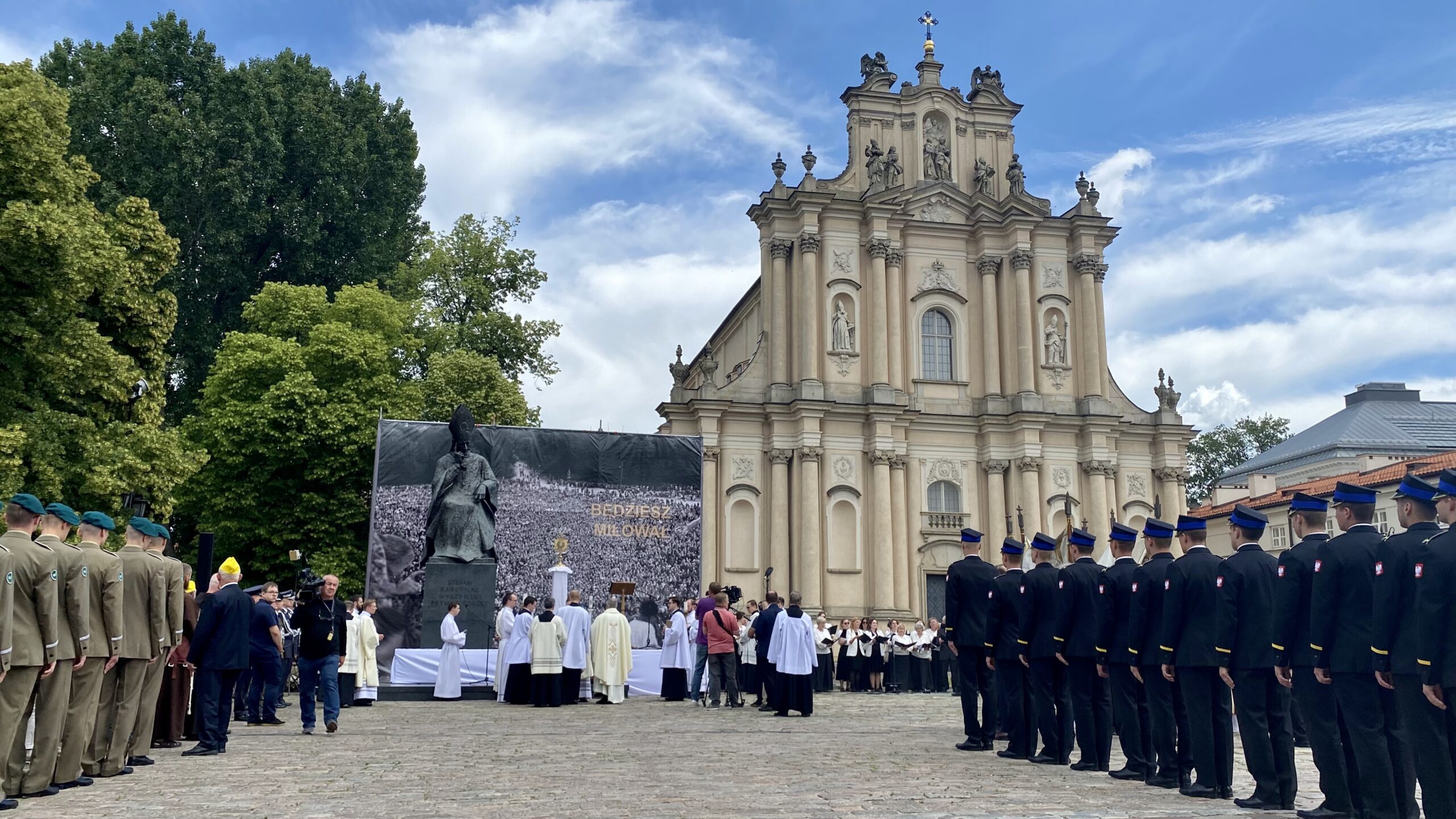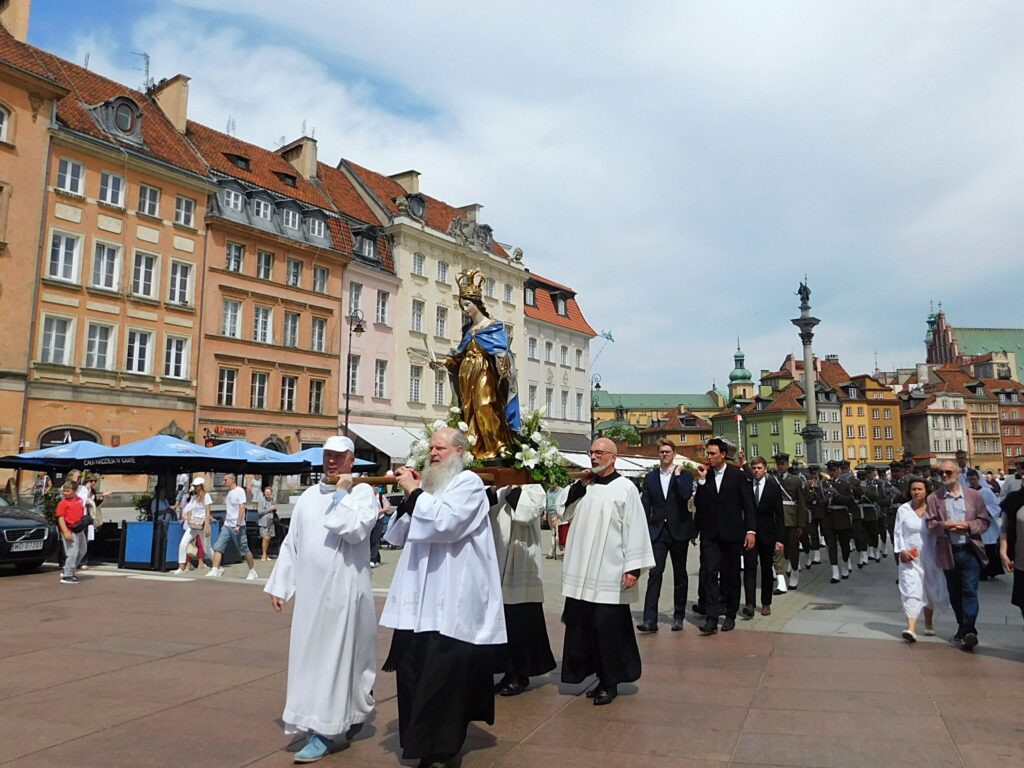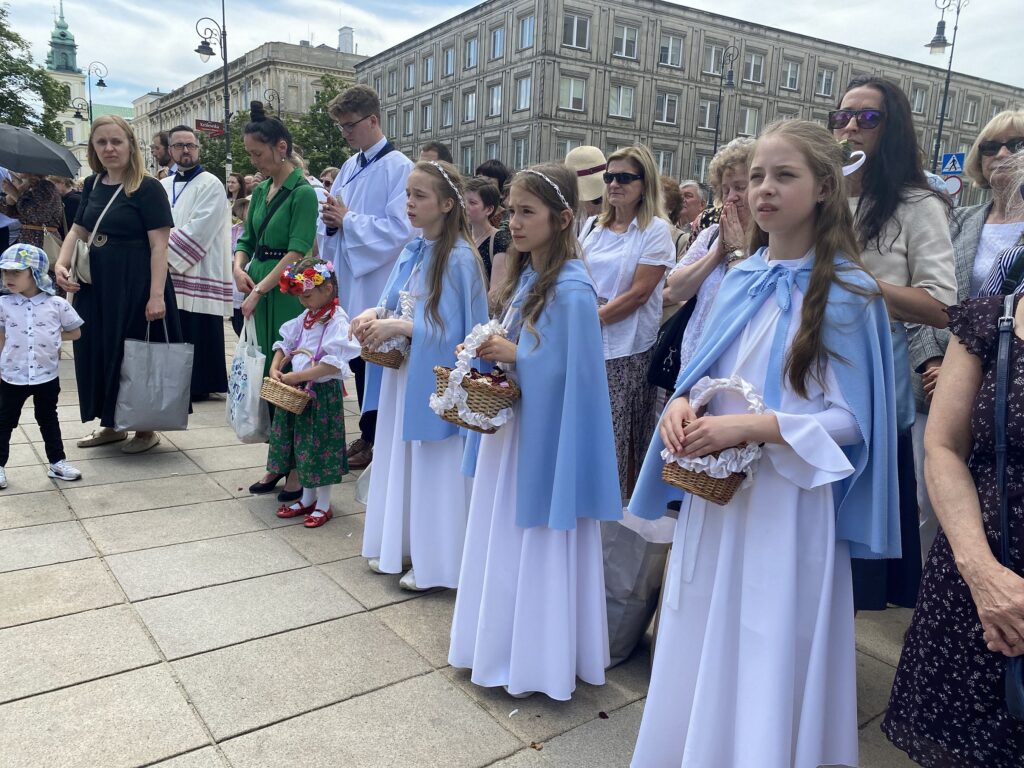Poland: Millions participated in Corpus Christi processions in Polish cities (EN+IT)


Photo credit: FNS
Millions of Poles walked through the streets of cities and towns across Poland, taking part in the traditional Corpus Christi processions. Poles celebrate the Solemnity of the Most Holy Body and Blood of Christ on the Thursday after Trinity Sunday.
*
Milioni di Polacchi sono sfilati per le vie delle città in tutta la Polonia partecipando alle tradizionali processioni del Corpus Domini. I Polacchi festeggiano la Solennità del Santissimo Corpo e Sangue di Cristo il giovedì successivo la domenica della Santissima Trinità.
Corpus Christi celebrations in Poland date back to the fourteenth century. The processions that set out after Holy Mass from churches in cities and villages throughout Poland on the feast of Corpus Christi are truly unique. Their participants openly profess their faith and ask for God’s blessing upon their homes, workplaces, fields, and farms.
At times, the distance to be covered is quite long. Procession participants stop at four altars, decorated with flowers and birch branches, to listen to the Gospel about the Eucharist. Singing Eucharistic songs, they follow the priest carrying the Blessed Sacrament.
Many Poles participating in the procession wear colourful folk costumes associated with a particular region of Poland. Men carry flags and banners depicting patron saints, while women carry portable religious images; painted on both sides, they are adorned with flowers. Girls spread varicoloured flower petals in front of the priest carrying a monstrance, and boys ring bells to signal the approach of the Eucharistic Lord. The events are attended by orchestras and folk music groups.
After the processions end, the participants take home the flowers and birch branches from the altars as a sign of God’s blessing. Farmers throw the branches onto their fields to obtain a good harvest.
Another unusual tradition is the preparation of flower carpets in churches and city streets along the route of the Eucharistic procession. The most famous flower carpets in Poland are made in Spycimierz (central Poland). They are almost 1 km long. The tradition, harking back to the early 19th century, was entered on UNESCO’s Representative List of the Intangible Cultural Heritage of Humanity in 2021.

Photo credit: FNS
*
Il festeggiamento del Corpus Domini in Polonia risale al XIV secolo. Il vero fenomeno sono le processioni che nella Solennità del Corpus Domini si snodano dopo la S. Messa dalla chiesa nei paesi e villaggi di tutta la Polonia. I partecipanti, con la loro presenza manifestano la fede e chiedono a Dio la benedizione per le proprie case, il proprio lavoro, i campi e le fattorie.
Percorrendo spesso lunghe distanze, i partecipanti alle processioni si fermano davanti a quattro altari, decorati con fiori e ramoscelli di betulla per ascoltare il Vangelo sull’Eucarestia. Seguono poi il Sacerdote che porta il Santissimo Sacramento con cantando canti eucaristici.
Molti Polacchi partecipanti alla processione indossano i colorati abiti popolari, legati ad una concreta regione della Polonia. Gli uomini portano bandiere e stendardi raffiguranti santi protettori, mentre le donne, portano i feretron – quadri religiosi portatili, dipinti su entrambi i lati, decorati con fiori. Le ragazze spargono petali di fiori colorati su cui il sacerdote cammina con l’ostensorio, mentre i ragazzi suonano le campane per segnalare il passaggio di Cristo. Agli eventi partecipano orchestre e gruppi di musica popolare.
Al termine della processione, i partecipanti portano a casa i fiori e i rametti di betulla dagli altari decorati in segno di benedizione. I contadini inseriscono nei campi i ramoscelli che hanno portato dalla processione, per ottenere un buon raccolto.
Una tradizione straordinaria è anche quella di preparare tappeti di fiori nelle chiese e nelle vie cittadine per questa occasione. Essi segnano il percorso della processione. I più famosi tappeti di fiori in Polonia sono realizzati a Spycimierz (Polonia centrale). La loro lunghezza raggiunge quasi 1 km. Questa tradizione di duecento anni nel 2021 è stata inserita nell’elenco rappresentativo del patrimonio culturale immateriale dell’umanità dell’UNESCO.

Photo credit: FNS



Dodaj komentarz